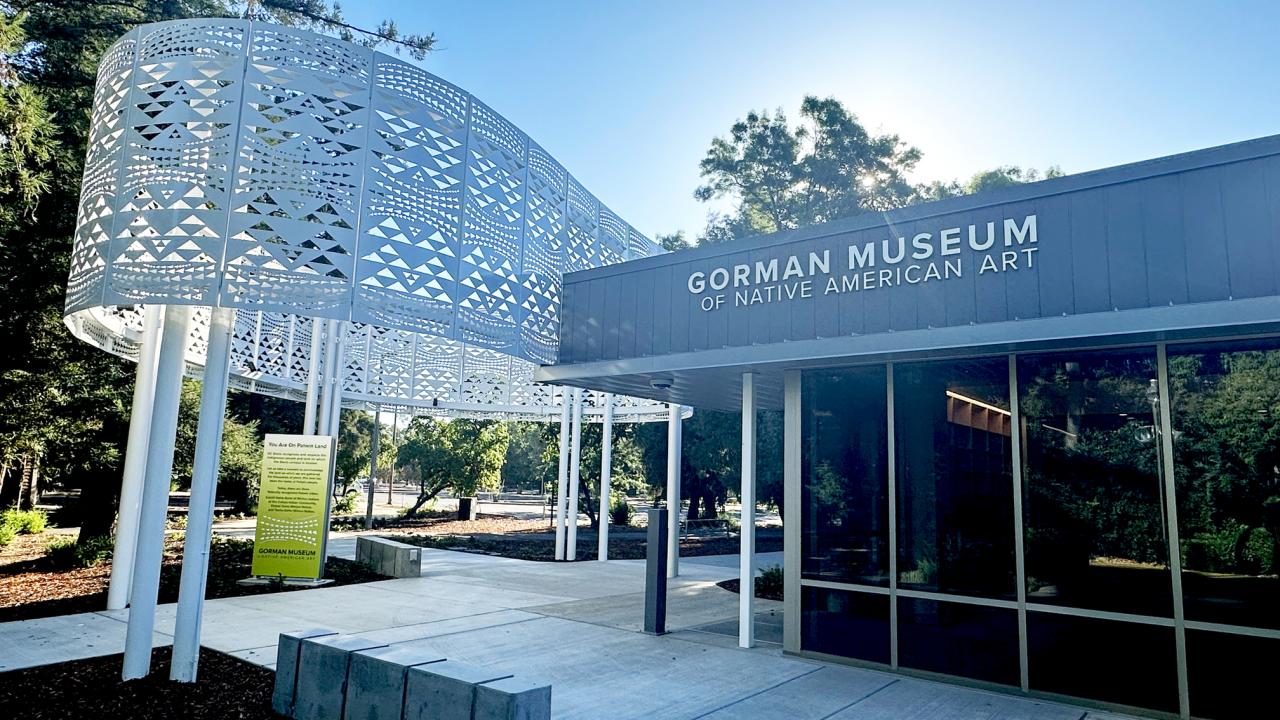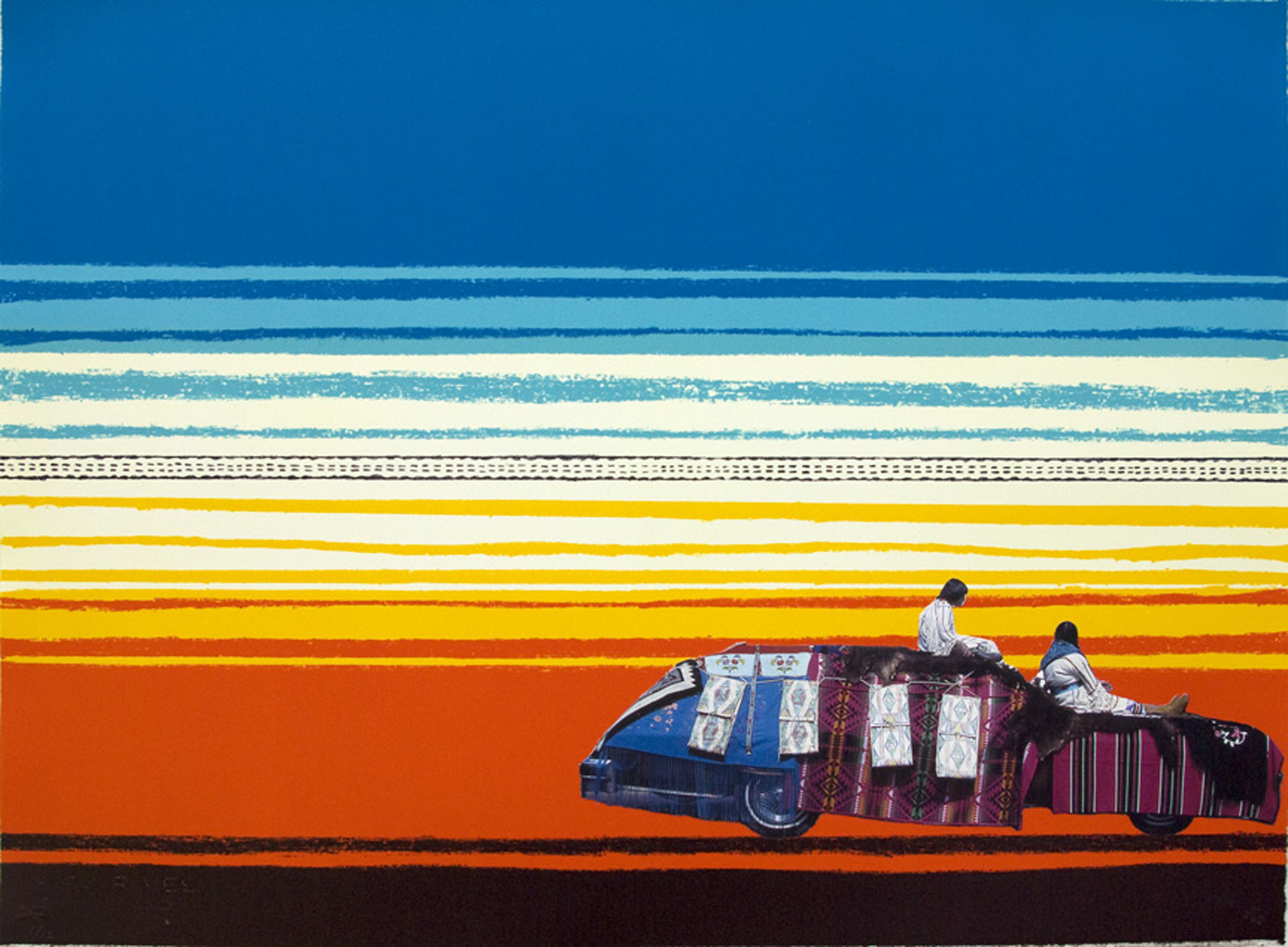
Gorman Museum of Native American Art at UC Davis Reopening in New, Expanded Home
The Gorman Museum of Native American Art at the University of California, Davis — unique in focusing on, exhibiting and collecting contemporary Native American art — will reopen in a new, greatly expanded location with a celebratory weekend Sept. 22 and 23 (Friday and Saturday). The occasion also marks the museum’s 50th anniversary.
Quick Summary
- One of the few museums in nation focused on contemporary Native American art
- Collection consists of about 2,250 works, most created since 1980
- One opening exhibition will feature works by 20 California Native artists
- Friday, Sept. 22: ribbon-cutting ceremony at noon, museum open to public at 2 p.m.
- Saturday, Sept. 23: Events include music, dance and other performances from noon to 4 p.m.
- Museum will be open noon to 5 p.m. on weekends and 11 a.m. to 5 p.m. Wednesday, Thursday and Friday.
- Admission is free.
After a ribbon-cutting ceremony at noon Friday, Sept. 22, the museum will open to the public at 2 p.m. The following day’s events will include music, dance and other performances from noon to 4 p.m. The museum will be open noon to 5 p.m. on weekends and 11 a.m. to 5 p.m. Wednesday, Thursday and Friday. Admission is free.
“Since its founding, the museum has been a unique and important place for telling the story of the continuing artistic accomplishments of Native Americans,” said Estella Atekwana, dean of the UC Davis College of Letters and Science, of which the museum is part. “The greatly expanded museum in a more visible and accessible location stands to make an even greater impact during the coming decades.”
Much larger home for exhibitions and collection
The museum, located in the UC Davis Gateway cultural corridor along Old Davis Road, has 4,000 square feet of gallery space — nearly four times more than its former home on campus. Along with space for temporary exhibitions, it features a gallery displaying works from the collection on a rotational basis and visible storage to give visitors access to the collection.
“UC Davis has a long history as a home for Native American artistry, including visual and performing arts,” said Chancellor Gary S. May. “This spacious location near the campus gateway is an ideal place to showcase the influence and contributions of Native people for generations to come.”
The Gorman Museum is committed to contemporary Native American art that enacts “Visual Sovereignty” through politically and socially engaging exhibitions.
The museum has a collection of 2,250 artworks, most created since 1980, including paintings, photography, ceramics, textiles and original prints. Among the artists represented in the collection are Kenojuak Ashevak, D.Y. Begay, Rick Bartow, Robert Davidson, Oscar Howe, Lucy Lewis, Lee Marmon, George Morrison, Bill Reid and Jaune Quick-to-See Smith and Kay WalkingStick.
Since its founding in 1973, the museum has shown works by a wide range of established and emerging artists, with 225 group and 88 solo exhibitions, and has also developed touring exhibitions.

“The year 2023 marks the 50th anniversary of the Gorman Museum and continuing support of contemporary Native American artists who create art as a continuum of Native American presence,” said Hulleah Tsinhnahjinnie, museum director and professor in the Department of Native American Studies. “The renovated space was manifested and realized into reality by a dedicated community of local, inter-tribal artists and allies who embrace the power of Native American art as a site to continue the creative and intellectual conversations that was interrupted by tropes and bias.”
Entrance sculpture a focal point
Those coming to the museum will be greeted by a large, circular public artwork based upon Native American basketry designs that was created by Tsinhnahjinnie, who is also an artist. The pavilion honors the late Bertha Wright Mitchell, a Patwin basket weaver who in the late 1990s was the only documented fluent speaker of the Patwin language.
The building, a single-story structure with deep eaves common in California architecture, is painted with bands of green representing tule grass, a once-common plant in California used by Native American people to make baskets, clothing, tents, houses and boats.
The museum provides learning resources for classes and research opportunities for students and faculty across many UC Davis disciplines, as well as for other scholars and educational institutions.
Museum a link in UCD's cultural corridor
The museum is named in honor of the late artist Carl Nelson Gorman, a founding faculty member in the UC Davis Department of Native American Studies. The department, founded in 1969, is one of the oldest Native American studies programs. UC Davis is one of four U.S. universities offering a doctorate in Native American studies.
The museum is an integral part of the UC Davis Gateway cultural corridor connecting UC Davis cultural gems: the Robert and Margrit Mondavi Center for the Performing Arts and the Jan Shrem and Maria Manetti Shrem Museum of Art. The Gorman Museum also physically links the Gateway with the departments of Art and Art History, Music, Theatre and Dance, and the UC Davis Arboretum and Public Garden. The museum is easily accessible from Interstate 80.
Spotlight on California Native Americans and collection
The opening exhibition “Contemporary California Native Art” will include about 40 works by 20 artists, all members of California tribes. Prior to European contact, there were about 500 tribes in California, which has the largest population of Native Americans — about 760,000 — of any state.

Recent awards, funding and support
The museum recently received $500,000 in grants to create the new Collections Gallery. An American Art Responsive Grant from the Henry Luce Foundation for $250,000 supports the custom caseworks that display and house the museum collection of pottery and basketry. A grant from The Andrew W. Mellon Foundation Art Museum Futures Fund for $250,000 supports museum equipment and operations costs to develop collections, enhance stewardship and the new Collections Gallery, as well as the opening exhibition and events.
The museum received a generous donation from longtime arts and UC Davis supporters Bill and Nancy Roe.
The Gorman Museum offers memberships at several levels. Members receive notice of exhibitions, events, gallery talks and tours with artists and museum staff, priority registration for workshops and other events, and discounts on museum publications. The public can also support the museum through gifts. Memberships and donations (tax-deductible as allowable by law) support exhibition and event programming, as well as benefit the care and conservation of the permanent collections, and a greater level of support for featured artists in the forms of honoraria, residencies and exhibit publications.
UC Davis and Patwin land
UC Davis is located on land that has for thousands of years been home to the Patwin people. There are three federally recognized Patwin tribes: Cachil DeHe Band of Wintun Indians of the Colusa Indian Community, Kletsel Dehe Wintun Nation and Yocha Dehe Wintun Nation. The full land acknowledgment statement is available here.
Photo and artworks courtesy of the Gorman Museum.
— Jeffrey Day, content strategist in the UC Davis College of Letters and Science
